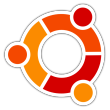So I’ve decided to write a bit more for the blog again. Too many editorials/Rants regarding stupidity/injustice in Linux have been published as of late. This portrays the wrong purpose for Yet Another Linux Blog. I originally started the blog to serve as a place where I could chronicle my search for the best Linux Desktop, which, as some of you witnessed, I found for 2005. It seems I’ve started to migrate away from this purpose. Well, it was bound to happen right? I mean, there is plenty of stupidity and injustice floating around…
Therefore, I opened up this category to record my true learning…true as in I’m going to step through each and every application present in most desktop distros…of KDE. I haven’t even begun to find out what every single application in KDE does or what it is for…I’m just as big of a newb as most people are having started and remained with slackware and the shell for so long. So this will be fun.
I figured that many people switching to Linux probably wouldn’t use half the applications because they most likely wouldn’t know what they are for. With a little help from your friendly neighborhood Linux Blog, hopefully things will right themselves in the KDE world. I’ve also got plans to enter the forray that is Gnome very soon as well. I would cover XFCE but a majority of the programs present there are in both Gnome and KDE so it would defeat the purpose. Perhaps a review of XFCE 4.2.2 would be a good addition to these categories?
Anyway, this first entry serves as clarification on the direction this category will go. Each week I’ll pick out an application (or maybe a few if they are smaller) and I’ll go through the functionality and purpose of the application as well as which desktop distros have this application by default. I’ll also link to the author/homepage for the app. As I said, I hope this helps some people out. I know I was confused the first time I logged in on a desktop distro chock full of applications.
I’ve also found that the Linux Blog forum has been gathering some cobwebs as of late. I think this is a shame because it provides such an organized way of discussion. Thus, I’m closing comments on KWhat? (on all other posts besides this one) and the “yet-to=be-named-gnome” category and redirecting comments and questions on the article to the forum. So this sounds like a good time…if I can get another hard drive (I had one die on me) so that I can get the old PII 350 up and running as a spare test box. That way I can triple boot on two machines and check out different desktop distros simultaneously. So if any of you have a spare 10+ GB ATA hard disk laying around, get in touch with me 😉 That’s it for now. Look for Kwhat? to begin sometime this week.
 With Knoppix at least they named the distros differently. With KDE and Gnome, taking the first letter of the names was good enough. But Ubuntu and those using it have developed a silly idea and are trying desperately to make it ‘cool’. Unfortunately, most people seem to agree with them that this naming convention is just that…cool. My stomach turns…
With Knoppix at least they named the distros differently. With KDE and Gnome, taking the first letter of the names was good enough. But Ubuntu and those using it have developed a silly idea and are trying desperately to make it ‘cool’. Unfortunately, most people seem to agree with them that this naming convention is just that…cool. My stomach turns…



 I started asking myself questions about Linux the other day. I began to think about what Linux lacked that Windows had (trying to get into the head of a die hard Windows fan and persuade them to think Linux). Certainly it isn’t appearance. Windows is actually behind Linux in this area. Certainly it isn’t detectability. Linux is also ahead of Windows in this area. Driver support? Yes…big gap…but one that we as Linux programmers, developers, and users are all well aware of and one that cannot be improved drammatically unless manufacturers get behind Linux. So what is left? Wizards. Wizards? That’s right. Wizards. No, not the D&D spellcasting folk…put your twenty sided die away. I’m speaking of the nice trail of menu’s that greet you to set up a function in your operating system.
I started asking myself questions about Linux the other day. I began to think about what Linux lacked that Windows had (trying to get into the head of a die hard Windows fan and persuade them to think Linux). Certainly it isn’t appearance. Windows is actually behind Linux in this area. Certainly it isn’t detectability. Linux is also ahead of Windows in this area. Driver support? Yes…big gap…but one that we as Linux programmers, developers, and users are all well aware of and one that cannot be improved drammatically unless manufacturers get behind Linux. So what is left? Wizards. Wizards? That’s right. Wizards. No, not the D&D spellcasting folk…put your twenty sided die away. I’m speaking of the nice trail of menu’s that greet you to set up a function in your operating system.